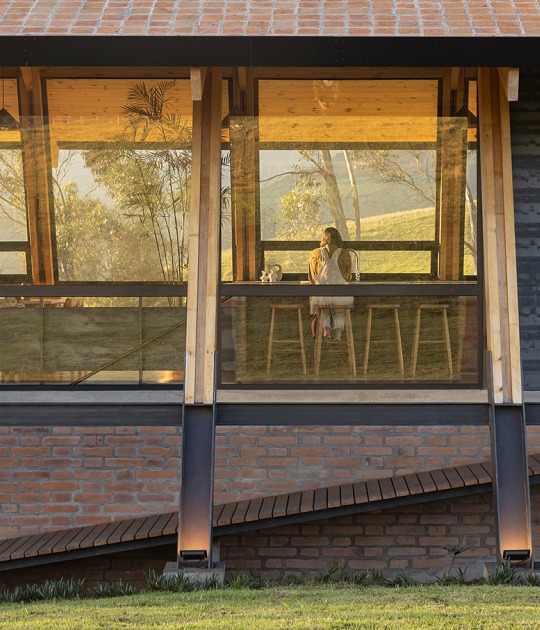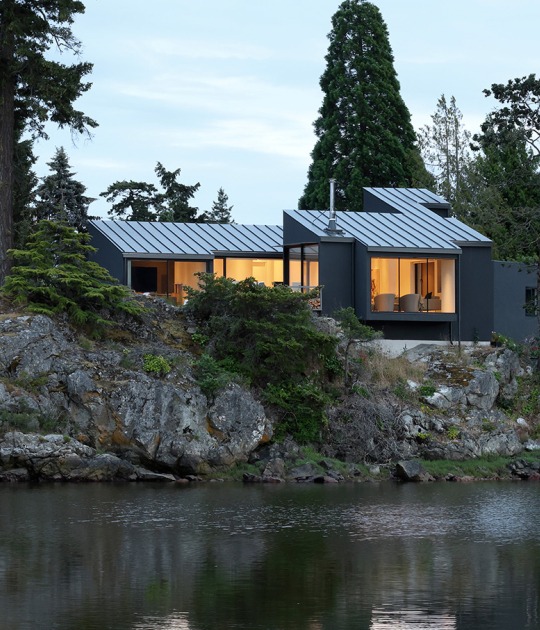According OMA, MEETT is not an architectural intervention, but an urban machine. "Both monumental in its scale and subtle in its overall impact, it will be a new gateway to Toulouse."
"Navigation around MEETT is simple – the routes are intuitive, which combined with clear information signs throughout the complex makes it easy for visitors to find their way. Furthermore, the compactness of the expo reduces the distances that the public need to cover during their visit. The entire area is accessible to heavy vehicles, with a separate entry and exit point, and an internal road surrounding the north, west and south facades facilitates distribution and management."
Project description by OMA
MEETT, Toulouse’s new Exhibition and Convention Centre, is located in the innovation zone north of Toulouse. The project is not only about architecture, but also about infrastructure, urbanism, landscape and public space. The 155,000m² exhibition and convention center is positioned in between the city and the countryside: it connects urbanized plots to the south – mainly dedicated to aeronautics, including the airport hangar of Airbus– to an agricultural landscape to the north.
This rural area, well connected and close to the center of Toulouse, is vulnerable to the pressure of urbanization. Our design uses the massive scale and diverse program of MEETT as an antidote to the sprawl of a standard exposition park, in order to preserve the surrounding Occitanic countryside.
MEETT is conceived as an active strip – ‘une bande active’ - a horizontal and compact project, divided in three parallel bands: a row of modular exhibition halls to the north; a convention center and multi-function event hall to the south; and a reception area to the center, featuring a silo car park for 3,000 cars. Instead of banishing parking underground or pushing it to the periphery of the site, where it has no relationship with the surrounding landscape, we placed the parking at the center of the project, covering a spine where amenities and access to the hall are concentrated.
By combining interior and exterior spaces, and establishing connections with the infrastructure – tramway, roads, airport – and surrounding countryside, a typically introvert typology, the expo, is transformed into an extrovert one.
MEETT is not an architectural intervention, but an urban machine. Both monumental in its scale and subtle in its overall impact, it will be a new gateway to Toulouse.
Northern strip – Exhibitions
The exhibition building at the northern strip is impressive in scale as it can be enjoyed as a single, nearly 700-m long space. The building is composed with a limited repertoire of functional elements – a series of black boxes (both on the ground and elevated in the air), white-colored steel profiles for the structure and a polycarbonate skin for the facade. Together they form a regular composition which emphasizes the giant scale of the building but also creates a bright and pleasant environment for the exhibition spaces.
The Exhibition Hall provides a total of 40,000m² of presentation area, which can function either as one major exhibition space or be separated into 7 modular halls, separated by a mechanized curtain. Two elevated mezzanines at either end of the hall provide space for reception or VIP program, while overlooking the main spaces. MEETT is a project about the relationship interior-exterior, and the Exhibition Hall is no exception, as the translucent façade provides the giant hall with generous daylight.
The entire masterplan –including all buildings– is based on a 3-meter grid, following the standard expo distribution, which permits to dissect the building in 3x3 meter cells as if it was a Tetris board, providing endless possibilities to split the use of the ground but also forming an underlying system for all architectural components.
Central strip – Reception area
At the center of the project, a 32,700 m² reception area on the ground floor welcomes visitors into the exhibition halls, the exterior expo and the convention center. This is called the Rue Centrale, and functions, honoring its name, as a street – it is circulation area, information center, and public space all at once. Fully pedestrian, it can house from ticket offices to food stands.
Elevated above the Rue Centrale and directly accessible from it is the carpark, a four-story elevated silo that sits right in the middle of the project. This building functions as a ceremonial entrance directly into the heart of MEETT, connected to the exhibition areas. It is an open building, to maximize the use of natural light and allow views into the expos from the parking lots.
Southern strip – Events
The southern strip of MEETT consists of a multi-function Event Hall and a Convention Center combined in a single building also directly accessible from the Rue Centrale. The entire building can also be transformed into additional exhibition spaces on two levels.
The Event Hall and Convention Center building is designed as a machine. A system of moveable vertical shutters and horizontal partitions allows it to transform in few minutes into a large number of configurations, from small meeting rooms in the upper floors of the Convention Center to an open plan layout bathing in natural light on the ground floor.
A 13-m tall sliding façade on the eastern face of the event hall can be opened and allow interior events to continue on the exterior event square. In total the southern strip provides a total leasable area of 65000 m² inside and 40000 m² outside of the expo area.
Navigation around MEETT is simple – the routes are intuitive, which combined with clear information signs throughout the complex makes it easy for visitors to find their way. Furthermore, the compactness of the expo reduces the distances that the public need to cover during their visit. The entire area is accessible to heavy vehicles, with a separate entry and exit point, and an internal road surrounding the north, west and south facades facilitates distribution and management.
MEETT also features a transportation hub with a tram station, a bus station, a taxi stop and a reception area for cyclists. This hub on the Eastern side of the expo has the potential to accommodate more infrastructure, anticipating the further urbanization of the area. Directly in front of the transportation hub, a 170m long plaza spans from East to the West, towards MEETT, and provides one single entrance route to MEETT, functioning as an open public area.























































